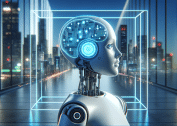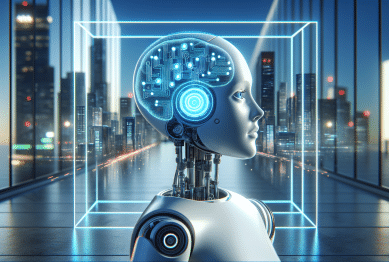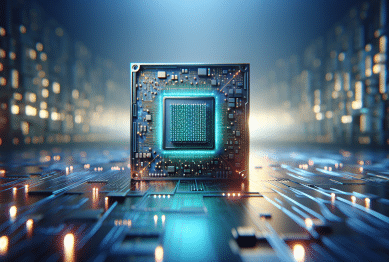Artificial intelligence shapes how people interact with devices, services, and information daily. Explore how AI-driven technologies make routines more efficient, assist in health monitoring, personalize recommendations, and influence everything from work to home. This guide breaks down real-life examples and explains the science behind the convenience.
How AI Powers Your Daily Tasks
Artificial intelligence might sound futuristic, but it’s embedded in many daily routines already. Whether using a smartphone’s virtual assistant, searching online, or navigating maps, advanced machine learning algorithms are at work. These AI tools can recognize speech, suggest spelling corrections, and learn preferences to make digital interactions smoother. According to the National Institute of Standards and Technology, AI in speech and text recognition continues improving accessibility and efficiency (https://www.nist.gov/news-events/news/2021/09/ai-and-future). Many users aren’t aware of just how much these technologies streamline tasks that once required more time and effort.
Consider the integration of AI into search engines. Semantic search and natural language processing allow engines to deliver more relevant results and even answer questions directly. This means people can find the information they need faster and with fewer errors or distractions. Even basic home cleaning now relies on AI, as smart robot vacuums adjust routes and schedules based on learned room layouts or daily habits. The invisible layer of intelligence running beneath devices has changed expectations about what technology can deliver, and this adaptability is possible thanks to advancements in AI data analysis.
AI does more than speed up processes—it learns from every interaction. By tracking habits and analyzing past behavior, AI-powered platforms help optimize digital lives. For example, email apps smartly filter out spam, while online banking systems automatically flag suspicious transactions to protect from fraud. On a larger scale, smart city infrastructure relies on sensor data interpreted by algorithms to control energy use, monitor air quality, or manage traffic flow more efficiently. This level of daily impact highlights why organizations continue investing in smarter, more adaptable software systems tailored to evolving needs.
The Hidden Helpers: AI in Health and Wellness
AI-driven technologies increasingly contribute to health and wellness by making monitoring and guidance both personal and precise. Wearable devices like smartwatches track physical activity, heart rate, sleep cycles, and provide feedback for healthy living. Machine learning models interpret the complex data collected, alerting users to irregularities such as unusual heart rhythms or poor sleep patterns. The American Heart Association supports this approach as a means to encourage proactive health management and early detection of risk factors (https://www.heart.org/en/news/2021/07/20/artificial-intelligence-in-heart-health).
Virtual care and telemedicine have grown more sophisticated through AI. Algorithms help triage symptoms, identify urgent health issues, and even suggest potential conditions for further evaluation by a healthcare provider. Chatbots on health portals use natural language understanding to point users toward reliable articles or symptom checkers. Patients in remote areas—and those with busy lives—are getting tailored advice and reminders about medication or appointments thanks to artificial intelligence. As healthcare providers focus on preventative approaches, AI’s role in processing routine health data becomes increasingly vital to catch subtle patterns before they turn into bigger concerns.
Beyond everyday monitoring, AI supports scientific research and personalized medicine. Machine learning algorithms can analyze complex clinical trial data, uncovering treatment trends or predicting how individuals might respond to certain therapies. In some cancer care centers, AI tools identify patterns in medical images or genetic data that might not be obvious to human eyes. With this technology, patients and providers can benefit from more informed health decisions, promising earlier intervention and more tailored care options. The real-world effect is subtle but increasingly important for wellness at every age.
Smart Recommendations: AI in Shopping and Entertainment
One of the most visible applications of artificial intelligence is personalized recommendations. Whether browsing an online store or streaming a movie, AI analyzes behavior to show tailored suggestions. Retail platforms collect purchase history, search patterns, and even time spent looking at an item. This enables automated systems to highlight products users might not have initially noticed. According to the Brookings Institution, AI-powered recommendation engines have transformed e-commerce, making shopping experiences more satisfying and efficient (https://www.brookings.edu/research/how-artificial-intelligence-is-transforming-the-retail-industry/).
Streaming services work in a similar way. Algorithms learn from viewing history to build custom playlists, suggest new genres, or automatically play similar titles. The data-driven approach means each user’s homepage looks different, optimized for personal taste. Entertainment companies use this information not just to drive engagement, but to create original content designed around evolving viewer preferences. In turn, users enjoy a more intuitive, hands-off approach—the next recommended show or song is often surprisingly on target, making browsing almost effortless.
AI also powers online advertising, adapting in real time to present relevant ads without disrupting user experience. Ad engines consider search terms, webpage content, and previous interactions to select promotions likely to interest each individual. Although this kind of targeting is often invisible, it supports monetization and keeps many online services accessible. As the science behind natural language processing, predictive analytics, and pattern recognition advances, smart recommendations are only expected to become more refined, blending seamlessly into both shopping and entertainment choices.
AI and Security: Protecting Data and Privacy
As digital footprints expand, artificial intelligence has become a key tool in protecting data and privacy. Cybersecurity systems use AI to learn the signatures of common attacks—phishing, malware, or intrusion attempts—and quickly spot suspicious activity across networks. For individuals, this often means login alerts, fraud prevention notices, or immediate detection when an account is accessed from a new location. The U.S. Department of Homeland Security prioritizes AI-powered security to reduce response times and limit the spread of digital threats (https://www.dhs.gov/science-and-technology/artificial-intelligence-ai).
Biometric authentication, such as fingerprint or facial scanning, offers an extra layer of identification powered by AI. These systems continuously adapt to changes—like a new haircut or a slight injury—improving accuracy and minimizing false alarms. From unlocking smartphones to authorizing bank transactions, AI maintains security while offering a user-friendly experience. Behind the scenes, encryption keys and system logs are constantly monitored for anomalies, keeping sensitive information safer than ever before.
Privacy concerns around AI are rightly growing as well. Laws and best practices emerge to address how AI handles personal data and to enforce transparency. For instance, users can now review or delete search histories and adjust what information is collected by their favorite apps. Industry watchdogs stress the importance of regular software updates and responsible algorithm development, keeping safety at the forefront as AI integrates further into daily life. The evolving relationship between innovation and privacy shapes public discussion and policy alike.
Learning and Working Smarter: AI in Education and Offices
Education and workplace environments have been reshaped by the rise of artificial intelligence. In classrooms, adaptive learning platforms assess student progress, offering customized exercises or feedback suited to each learner’s needs. This enables more personalized and efficient education. Colleges use AI to guide admissions, automate grading, and provide virtual tutoring outside traditional hours. Many students have access to language learning tools or writing assistants that adapt their support as skills develop, further demonstrating how technology bridges gaps and enhances learning experiences.
In professional life, AI improves efficiency and assists with repetitive tasks. Digital assistants handle meeting scheduling, organize large data sets, and surface insights that might otherwise get missed. Advanced analytics detect workflow bottlenecks, propose solutions, and automate parts of decision-making. By automating emails or document reviews, employees find time to focus on creativity, strategy, or person-to-person communication. A report from the Massachusetts Institute of Technology found that AI adoption increases productivity and job satisfaction in various sectors (https://news.mit.edu/2020/artificial-intelligence-affecting-productivity-0723).
Remote work trends have cemented AI’s value even further. Video conferencing apps use AI for noise suppression, automatic transcription, and background blurring to improve communication quality. Project management platforms analyze tasks and workflows, recommending changes to boost output or improve collaboration even when teams are spread across different regions. As both education and employment evolve, intelligent systems make adapting to new methods and challenges simpler for everyone involved.
The Future of AI Accessibility and Ethical Development
Artificial intelligence has rapidly shifted from niche innovation to mainstream essential. As more people rely on AI in smartphones, vehicles, and cloud services, accessibility becomes a top priority. Developers work on natural language interfaces and customizable features to close the gap for those with disabilities or limited digital literacy. University research labs are pioneering approaches to ensure that AI adapts fluidly to linguistic, cultural, and socioeconomic differences, bringing benefits to broader populations (https://ai.stanford.edu/about/).
Ethical development remains an urgent concern. Organizations and policymakers increasingly stress the importance of transparent, fair, and accountable AI systems. Addressing algorithmic bias, ensuring inclusivity, and guarding against misuse are constant focuses as technology advances. Social scientists and engineers are collaborating to set benchmarks for fairness, privacy, and explainability in new applications. Everyone benefits from improved guidelines and oversight, creating a foundation for trust and safe integration.
AI’s potential grows daily—and so do the opportunities for creative use. As more tools become available, users can expect new ways to communicate, work, learn, and play. Staying informed about both the benefits and boundaries of artificial intelligence will help people make the most of these technologies while remaining vigilant about privacy, ethics, and social impact. The ongoing conversation is just getting started.
References
1. National Institute of Standards and Technology. (n.d.). AI and the Future. Retrieved from https://www.nist.gov/news-events/news/2021/09/ai-and-future
2. American Heart Association. (2021). Artificial Intelligence in Heart Health. Retrieved from https://www.heart.org/en/news/2021/07/20/artificial-intelligence-in-heart-health
3. Brookings Institution. (n.d.). How Artificial Intelligence is Transforming the Retail Industry. Retrieved from https://www.brookings.edu/research/how-artificial-intelligence-is-transforming-the-retail-industry/
4. U.S. Department of Homeland Security. (n.d.). Science and Technology Artificial Intelligence. Retrieved from https://www.dhs.gov/science-and-technology/artificial-intelligence-ai
5. Massachusetts Institute of Technology. (2020). How Artificial Intelligence Is Affecting Productivity. Retrieved from https://news.mit.edu/2020/artificial-intelligence-affecting-productivity-0723
6. Stanford Artificial Intelligence Laboratory. (n.d.). About. Retrieved from https://ai.stanford.edu/about/









